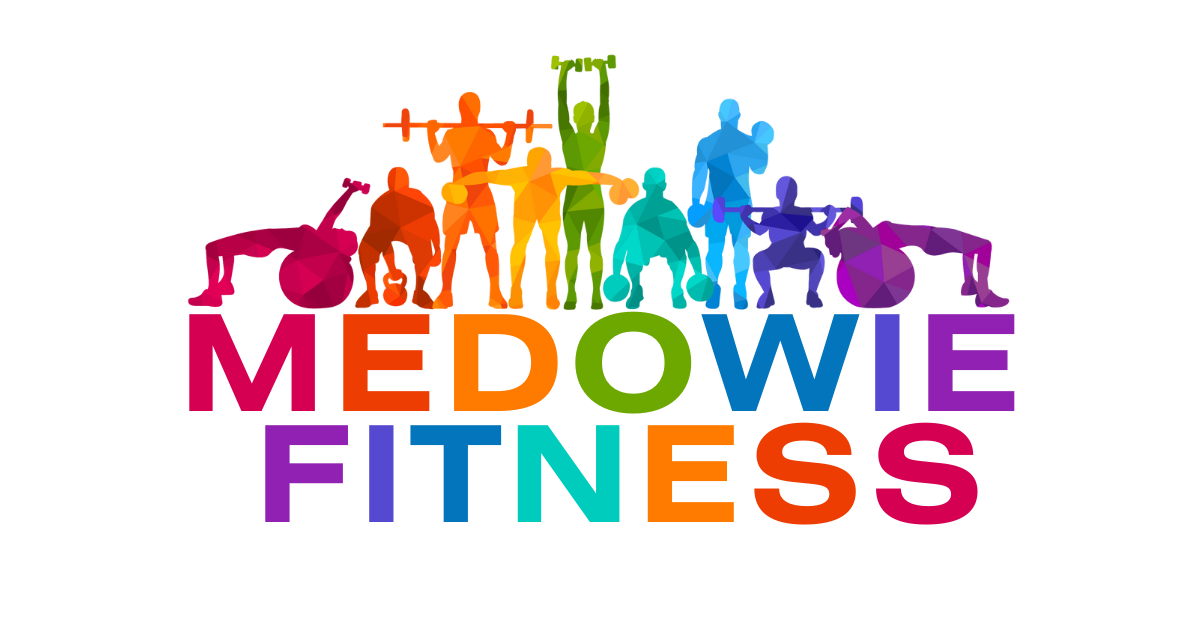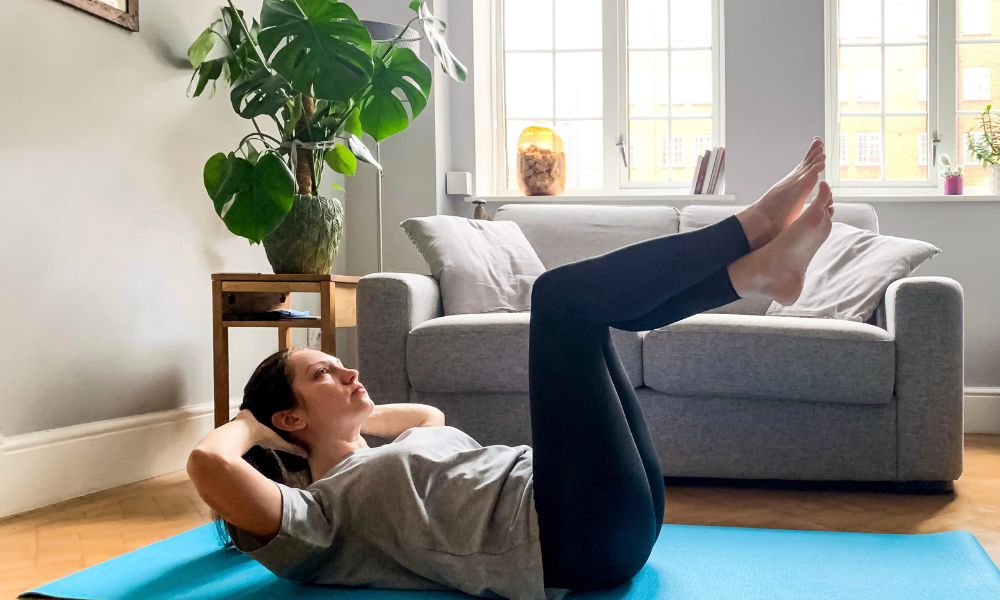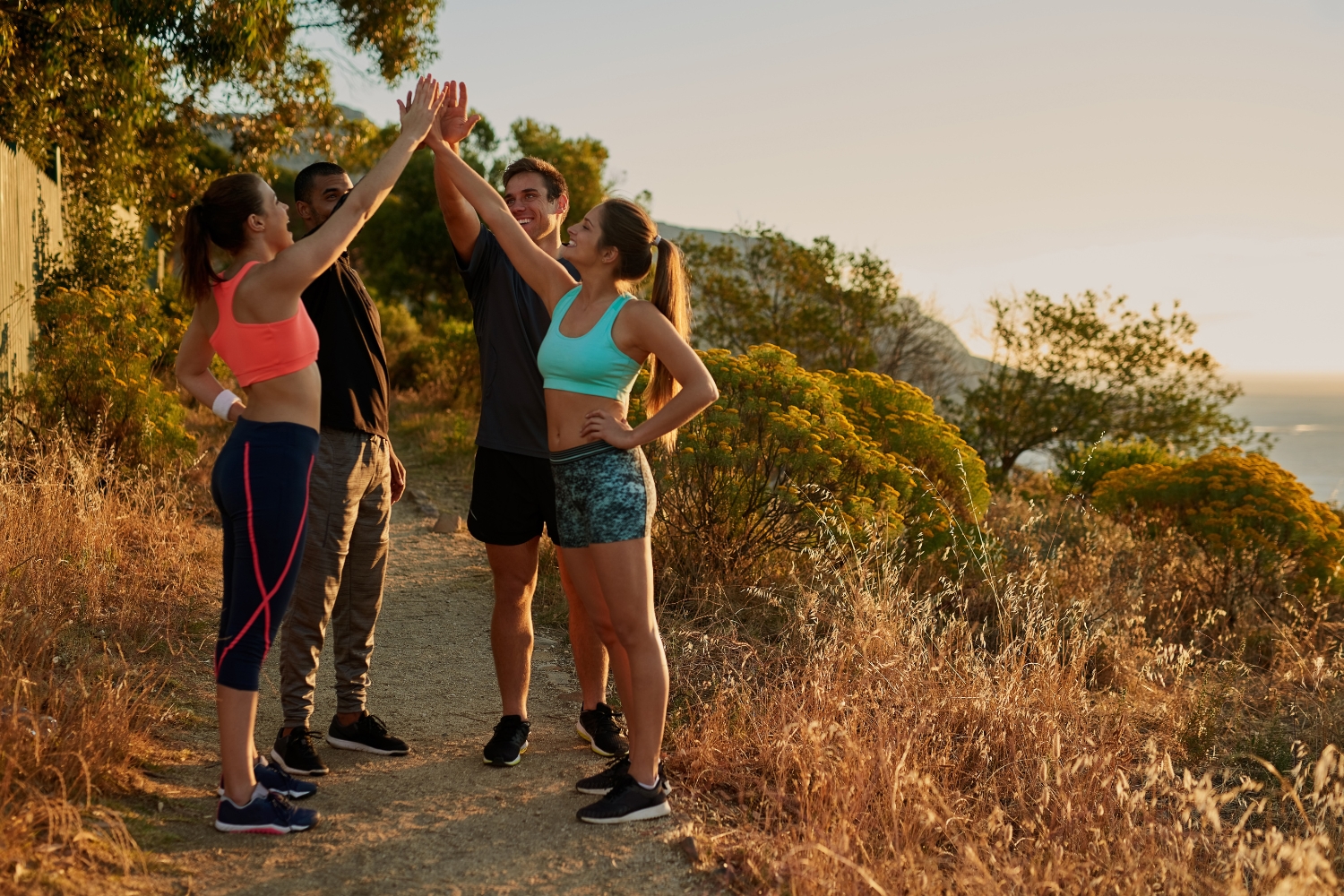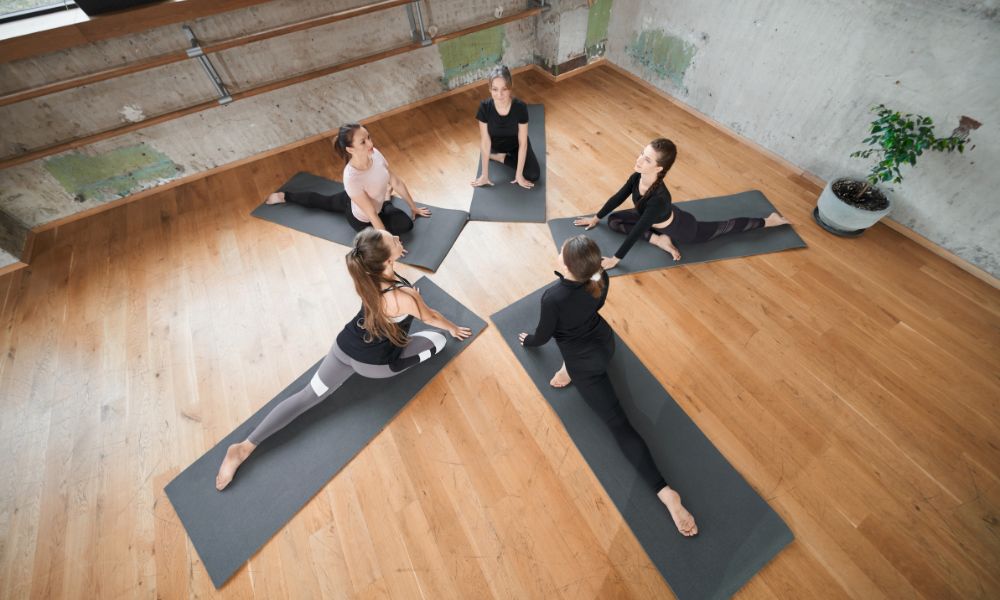Finding the perfect workout for your body and timetable can be a real slog, eh? Lots of us are on the hunt for an exercise that not only firms up our core but also gives our flexibility a nudge and soothes our noggin—all without having to leave the house.
Enter mat pilates. It’s a straightforward yet effective way to get moving with minimal fuss over space or gear. But getting to grips with it at home? That might seem like a bit of a puzzler.
We’ve found ourselves scratching our heads too, trying to suss out how to make the most of our Pilates sessions away from the studio. Would you believe more than 9 million people globally are in their living rooms giving Pilates a crack? This little nugget motivated us to dig deep into research and cobble together practical tips for making mat pilates not just manageable but downright enjoyable at home.
Our guide is chokers with advice on setting up the right vibe, keeping your form sharp, and picking exercises that give your body a good challenge while minding safety. Keen to shake up your routine? Stick around!
Key Takeaways
- Set up a quiet and comfy space for your Pilates practice, with nice lighting and no distractions.
- Always pay attention to how you breathe, as it helps connect your body and mind.
- Use a mirror to check your moves, ensuring they’re done right for better posture and results.
- Take things slow to focus on each exercise’s precision while keeping the correct form.
- Stick with it regularly; this will make your body stronger and more flexible over time.
Understanding the Basics of Pilates
Moving on from our introduction, we dive straight into the essentials of Pilates, a system that’s all about control and precision. Pilates focuses on core strength, flexibility, and body awareness.
It brings together the mind and body to create harmony and balance. Through controlled movements, you work not just your muscles but also tune into your breathing and alignment.
Pilates at home starts with mastering basic principles. These include proper form during exercises like Roll Up or Spine Stretch Forward. You learn to move with grace and efficiency, making every movement count.
This foundation sets the stage for a more impactful Pilates practice that enhances fitness levels over time while keeping injuries at bay.
Essential Tips for Practising Mat Pilates at Home
Create a dedicated space and focus on your breathing when practising mat Pilates at home. Also, develop body

awareness, take it slow, and remember that consistency is key for progress.
Create a calm and dedicated space
Set up a tranquil area for your Pilates practice. Find a quiet spot with ample space to move freely and place a comfortable mat. Eliminate distractions like phones and electronics from the vicinity to maintain focus.
Light a scented candle or play soft music to create a serene atmosphere.
Ensure that the lighting is gentle, allowing you to concentrate without straining your eyes. It’s also helpful if the room temperature is comfortable, as this allows your body to relax and fully engage in your Pilates session.
Focus on your breathing
As you practise Mat Pilates at home, focus on your breathing to enhance the connection between body and mind. When you inhale deeply through your nose, feel your ribcage expand, and then exhale fully through your mouth to engage your core muscles.
This helps maintain control and stability while executing Pilates exercises, promoting better alignment and muscle engagement.
Incorporating mindful breathing during Pilates not only enhances relaxation but also aids in maintaining stamina throughout the workout. By consciously syncing breath with movement, you can maximise the effectiveness of each exercise, leading to improved muscle control and a more connected mind-body experience during your home Pilates sessions.
Develop body awareness
Focus on feeling each movement in your body, and pay attention to how your muscles engage. Use a mirror or recording to observe your form and make adjustments. This helps improve posture and optimises the effectiveness of Pilates exercises.
Let’s delve into mastering challenging Pilates exercises next.
Take it slow
Developing body awareness allows us to understand our movements and align our bodies correctly. When practising Pilates at home, taking it slow helps us focus on each movement’s precision and control.
This deliberate approach ensures that we maintain proper form while transitioning between exercises, reducing the risk of injury and maximising the benefits of our Pilates practice.
Consistency in pacing not only enhances our mind-body connection but also supports gradual improvement in strength and flexibility over time. Taking it slow fosters a deeper understanding of the exercises, allowing for a more mindful and effective Pilates experience at home.
Consistency is key
To master Mat Pilates at home, consistency is crucial. Regular practice helps to improve body awareness, refine movements, and build strength over time. Working out regularly using the essential tips and challenging exercises can assist in mastering Pilates at home.
Consistency also enhances your mind-body connection, leading to a more effective and fulfilling Pilates practice that brings visible results. Keep practising to see progress with your Pilates sequences at home.
Mastering Mat Pilates with Challenging Exercises
Master challenging Pilates exercises to level up your practice with these advanced moves on the mat. Push yourself further and enhance your Pilates routine with these advanced mat exercises.
Roll Up
To perform the roll-up, lie on your back, arms extended overhead. Engage your core as you slowly lift your head and shoulders off the mat, peeling your spine off the floor one vertebra at a time.
Reach forward towards your toes before reversing the movement to return to the starting position. Focus on controlled movements and use your breath to help with each segment of the exercise.
Neck Pull
To perform the Neck Pull exercise, lie on your back with arms over your head, engaging your core. Then, slowly roll up to a sitting position while keeping your spine rounded. Lower yourself back down with control and repeat.
Focus on engaging your abdominal muscles throughout the movement for a strong and stable spine.
Keep in mind to breathe continuously during the exercise and avoid straining your neck or shoulders. This challenging move helps strengthen your core muscles and improves flexibility in the spine.
Spine Stretch Forward
Transitioning from the Neck Pull to the Spine Stretch Forward, let’s focus on this full-body stretch that targets your back and hamstrings. Sit up tall with legs extended in front of you, shoulder-width apart.
Inhale as you lengthen your spine, then exhale as you hinge forward at your hips, reaching for your feet or beyond. Keep your core engaged and roll forward one vertebra at a time, feeling the stretch along your back.
Then inhale to stack your spine back up to sitting tall. This exercise not only improves flexibility but also strengthens the core and promotes good posture.
Saw
To perform the “Saw” exercise, sit comfortably with legs extended, slightly wider than your mat. Reach arms out to sides at shoulder height. Twist from the waist, maintaining a straight back.
Exhale as you reach the opposite hand towards the opposite foot by engaging core muscles. Inhale as you return to the centre and repeat on the other side.
Achieve a full body stretch while strengthening your core and improving spinal flexibility with this classic Pilates move – Saw. It’s an excellent exercise for promoting better posture and relieving tension in the back and hips through controlled movement.
Boomerang
Transitioning from the invigorating Saw to the graceful Boomerang, this exercise enhances core strength and control. Lie on your back, arms overhead, then roll up into a sitting position and swiftly launch into a boomerang-like movement.
Emphasise control as you return to lying down and complete the fluid motion with precise movements. This exercise is designed to enhance body coordination, engage the core muscles, and challenge balance.
Boomerang Pilates Exercise demands precision and coordination with an element of fun. It engages the mind-body connection while enhancing flexibility and control in movement sequences that are beneficial for your overall fitness journey.
Important Considerations for a Safe and Effective Pilates Practice
Ensuring proper form and alignment. Preventing common injuries, and adapting for your level to enhance
safety and effectiveness in Pilates practice.
Proper form and alignment
Maintaining proper form and alignment is crucial for reaping the full benefits of Pilates. Position your body in a straight line from head to toe during exercises like the Roll Up or Spine Stretch Forward, ensuring that movements flow smoothly.
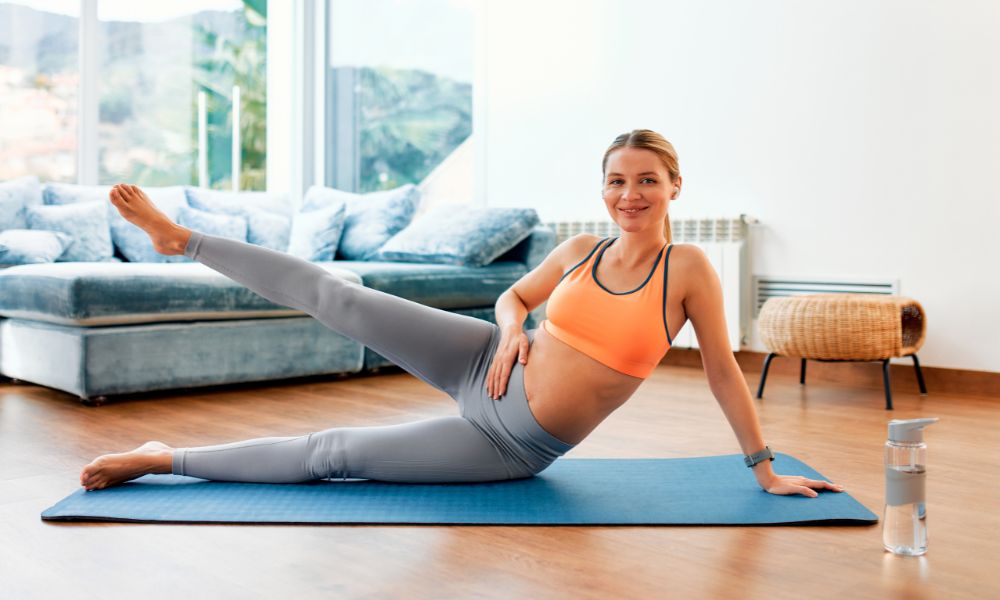
Engage your core muscles by drawing your navel toward your spine and keeping your shoulders relaxed. Pay attention to the details – such as keeping your feet flexed – for a safe and effective practice that maximises results.
Preventing common injuries
Maintain proper form and alignment during your Pilates practice to prevent potential injuries. Focus on engaging the core muscles and avoid straining the neck or shoulders. Adapt exercises to your level, gradually increasing difficulty, and listen to your body’s limits to reduce the risk of injury.
Stay attuned to your body’s signals for a safe and effective Pilates workout at home.
Adapting for your level
Transitioning from preventing common injuries to adapting for your level, it’s essential to tailor your Pilates practice towards your abilities. To accommodate varying fitness levels, you can modify the intensity of exercises and use props such as resistance bands or blocks.
It is advisable to focus on proper form and alignment while gradually increasing the challenge to prevent injury.
When practising Pilates at home, consider starting with foundational movements before progressing to more complex exercises like the Roll Up or Neck Pull. By incorporating modifications that suit your current capabilities, you can ensure a safe and rewarding experience in mastering Mat Pilates.
Home Pilates Mastery Begins Here – Enrol in Our Class Today!
Let’s wrap up our Pilates journey with a quick recap of our top tips for mastering Mat Pilates at home. Remember to create a calm space, focus on breathing, develop body awareness, and prioritise consistency.
Emphasise the practicality and effectiveness of these strategies in enhancing your Pilates practice. By implementing these tips, you can improve your form, prevent injuries, and adapt exercises to your level while striving for progress.
Stay motivated and explore further resources to continue enriching your Pilates experience!
